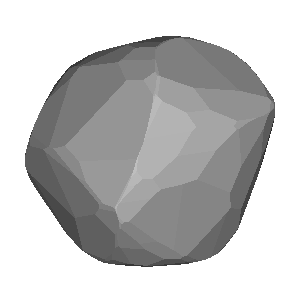2019-09-11 / TYC 6816-00286-1 / (91) Aegina
| # | OBS | Observer | Occ | Meth. | Instr. | CC | TSRC | UT1 | UT2 | UT3 | UT4 | UT2E | UT3E | Dur. | Chrd |
|---|---|---|---|---|---|---|---|---|---|---|---|---|---|---|---|
| 1 | show | A. Berdejo/L. Sanz | O+ | VID | M180 | ES | GPS++ | 20:36:01 | 20:37:50.62 | 20:37:56.70 | 20:38:09 | 0.64 | 0.32 | 6.08 | 93.0 |
| 2 | show | Denis Marchais | O+ | CCD | M406 | FR | NTP | 20:37:24 | 20:37:55.02 | 20:38:02.66 | 20:39:24 | 0.03 | 0.03 | 7.64 | 116.9 |
| 3 | show | P. Andre et al | O+ | VID | M300 | FR | GPS++ | 20:29:58 | 20:37:55.76 | 20:38:03.28 | 20:43:04 | 0.08 | 0.08 | 7.52 | 115.1 |
| 4 | show | Jean-Marc Lechopier | O+ | CCD | L120 | FR | NTP | 20:29:34 | 20:37:58.45 | 20:38:05.96 | 20:42:22 | 0.05 | 0.07 | 7.51 | 114.9 |
| 5 | show | E. Frappa et al | O+ | VID | M203 | FR | GPS++ | 20:36:31 | 20:37:55.20 | 20:37:57.94 | 20:39:30 | 0.09 | 0.06 | 2.74 | 41.9 |
5 observations found in db: euraster
Available (probably) matching predictions (click on the link to switch):| JPL#146 : 0a00827d-f626-42bf-bb20-bf4ccfe24bdb [db: observed] |
Using prediction 0a00827d-f626-42bf-bb20-bf4ccfe24bdb for map and profile fit
| Ellipse and circular profile fits to the timings (chords) |
|---|
|
|
Auto-Fit Result: Size = 125 x 91 km a',b' = 62.6, 45.4 km X0,Y0 = -95.0, 9.8 km Mean diameter = 107 km From 5 chords (VID,CCD) You can enter space separated chord numbers (example: 11 4 8) or a method like VIS to ignore all visual timings, or a time source like RAD and NTP (but not GPS). If the plot disappears, then there are less than 2 chords left (too much ignored, go back with browser). Check SiMDA for size and mass data. Check Johnston Archive for satellites. |
Sky projection (artificial light) for occ. time: 2019-09-11, 20:37 UT (JD = 2458738.359)
| DAMIT | Q | P (h) | λ, β | JD0 | JD-JD0 | φ0 | Version | Modified | Vol-equiv D | Cmnt |
|---|---|---|---|---|---|---|---|---|---|---|
| # 5831 | 1.0 | 6.028 | 40°, 32° | 2.457228e6 | 1510.4 | 0.0° | None | 2020-10-05 | not scaled | 2019-10-23 |
| # 5832 | 1.0 | 6.028 | 218°, 36° | 2.457228e6 | 1510.4 | 0.0° | None | 2020-10-05 | not scaled | 2019-10-23 |


Image size: 300px. Transparent image background for copy & paste
| Map with groundtrack and observer stations |
|---|
| Event Details |
|---|
Occultation UUID [and DB] : 0a00827d-f626-42bf-bb20-bf4ccfe24bdb [observed] Occultation Date + Time : 2019-09-11 at 20:34:38 UT +/- 0.01 min [1] Object Designation : (91) Aegina Orbit Class : MBA Star Designation : GDR3 4109475909186807296 Star Coordinates (ICRF) : RA = 17 14 45.5264, DE = -25 18 18.543 [2] Star Magnitudes : G = 10.3 mag, RP = 9.73 mag, BP = 10.68 mag Object Magnitude : V = 14.57 mag Estimated Magnitude Drop : 4.3 mag Estimated Max. Duration : 7.2 sec Object Mean Diameter : 110 km (src: astorb) Speed of the shadow : 15.3 km/s Elongation to Moon & Sun : 64° (sunlit = 95%), Sun = 91° Cross-track uncertainty : 1.0 mas = 1 km = 0.02 path-width (1-sig) RUWE and duplicate source : 0.73 mas, dup.src = 1 (0:false, 1:true) Ephemeris Reference : JPL#146 Object is a Gaia mass determination target ! [1] time t0 of closest geocentric approach c/a, [2] including proper motion until t0 |
| More Data and Informations |
|---|
(If error 404: link not valid which means no data available)
| Aladin Sky Atlas |
|---|
| Aladin Lite direct link (has Gaia overlay) |